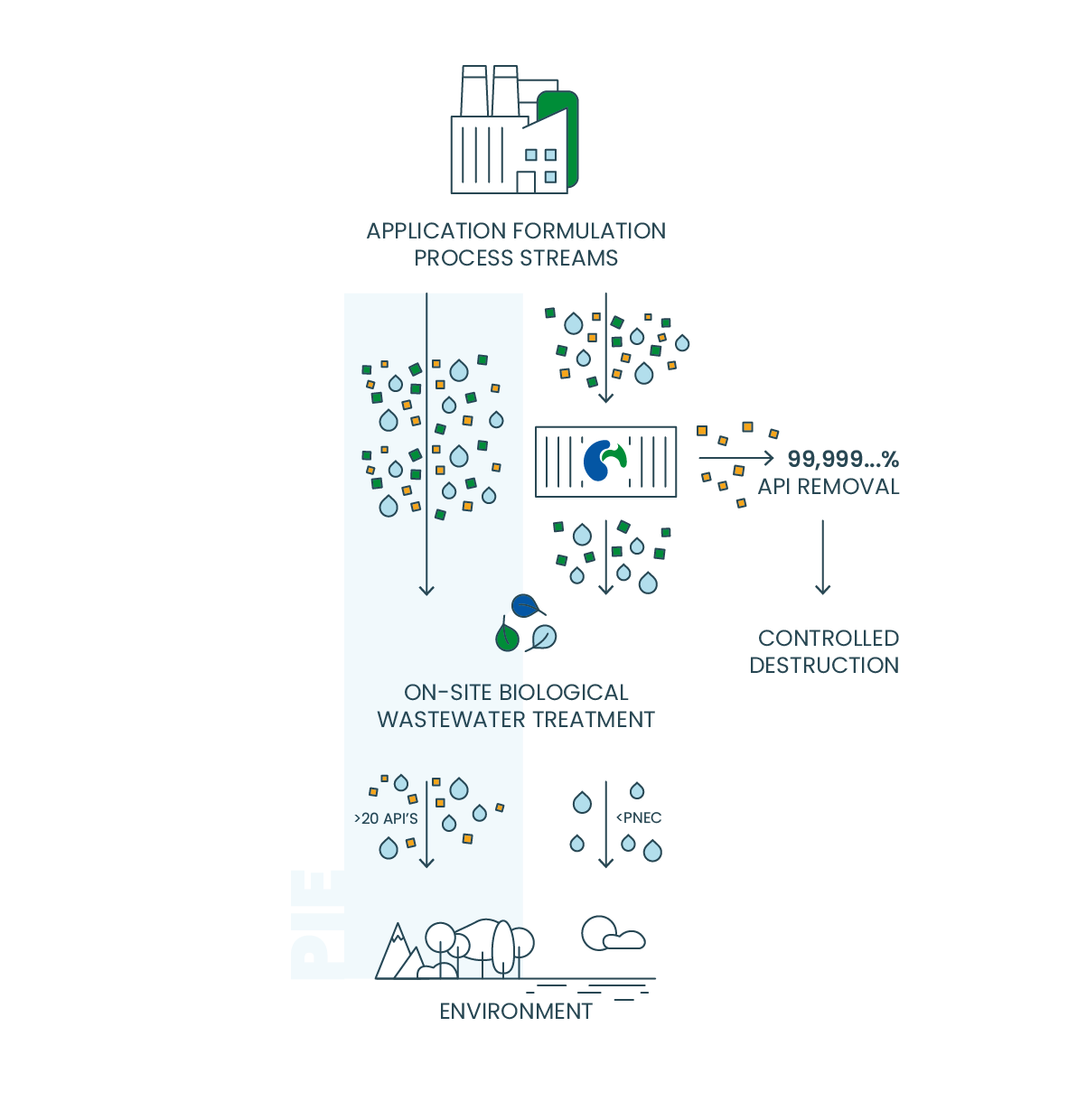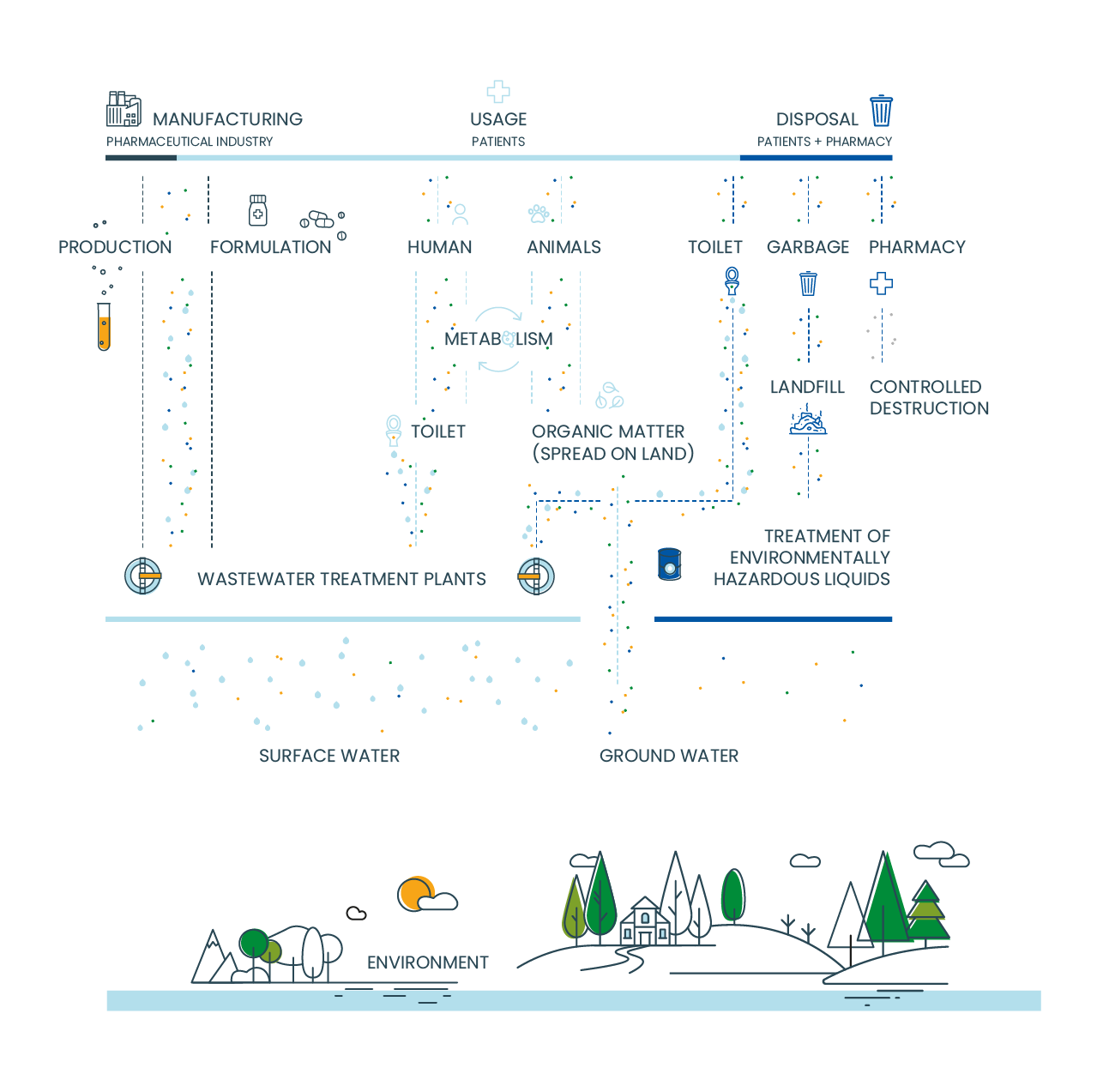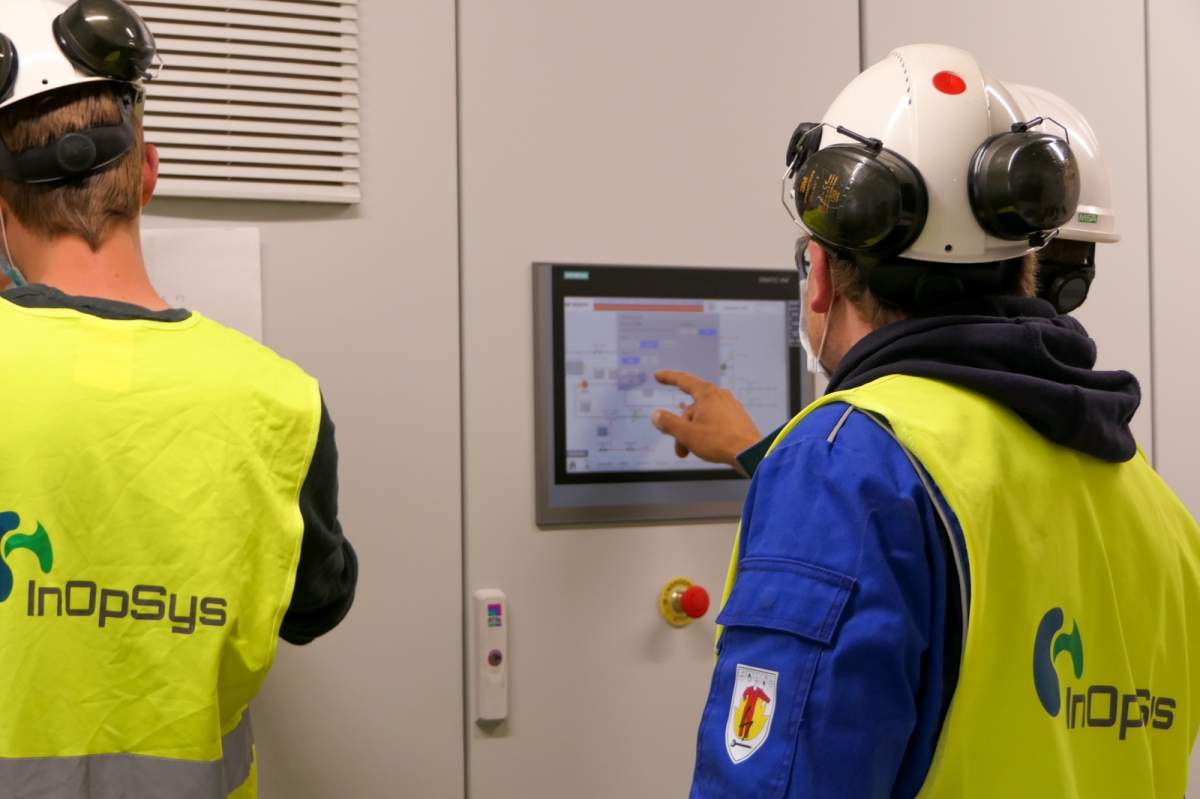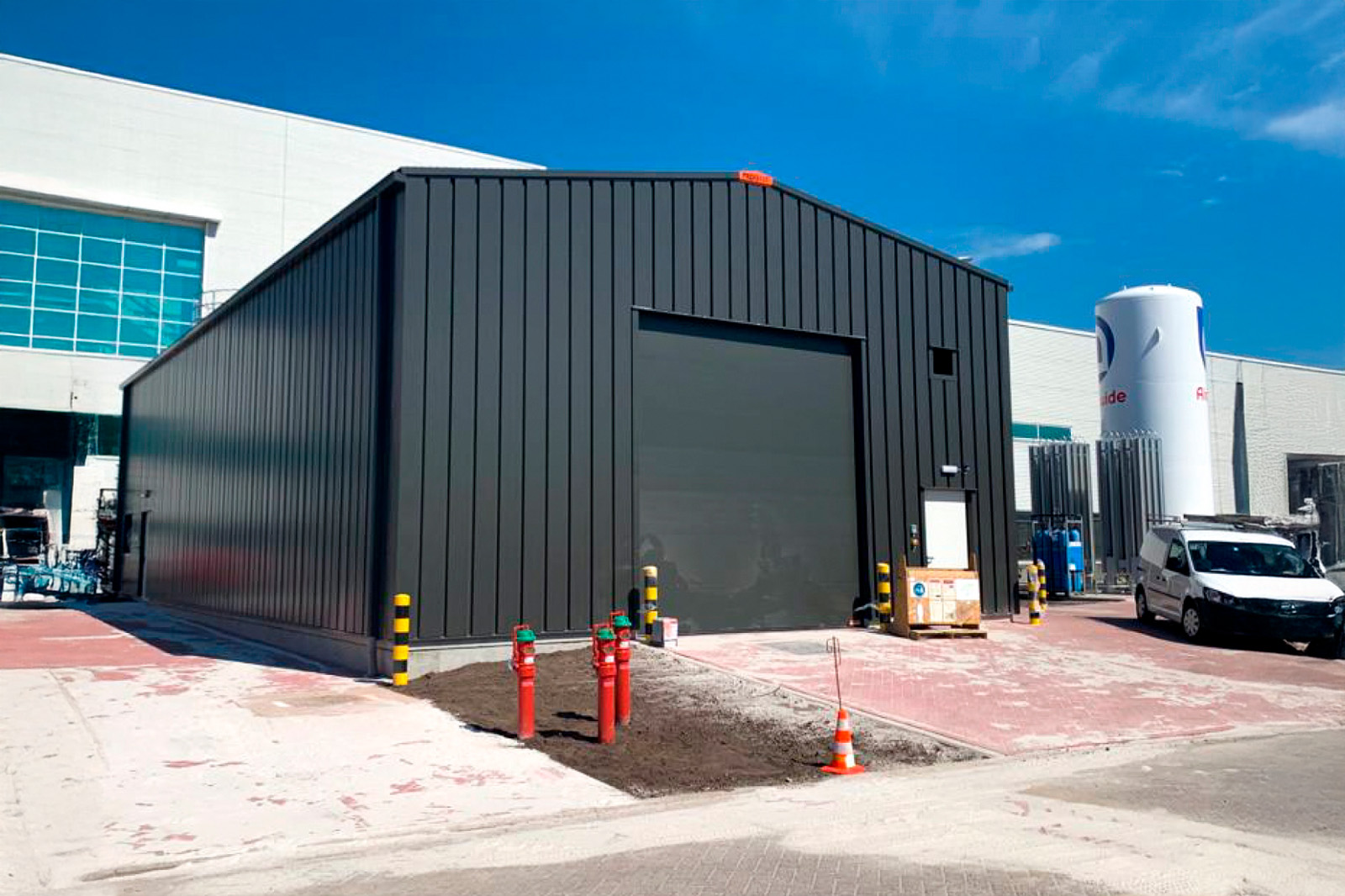
API removal
main features
- General applicability for API containing streams
- Selective removal of multiple API’s (99,99999%)
- No bromates
- No AOX
We have developed multiple solutions to reduce the emerging challenge of pharmaceuticals in the environment (PIE).
At one of the major formulation sites of a pharmaceutical client, a particular wastewater contains a complex mixture of more than 23 different active pharmaceutical ingredients (APIs), making it incompatible with the on-site biological water treatment plant. Conventional methods were either ineffective or unsustainable for such a diverse and potent load.
Inopsys designed and installed a three-step treatment train, modularly housed in a contained building on-site. The process combines:
- Physico-chemical treatment
- Ozonolysis
- Specific adsorption
This configuration offers the highest selectivity and lowest energy consumption when compared to conventional mono-technologies like membranes or electro-oxidation. Each step was carefully selected to maximize efficiency and adaptability, ensuring that even the most persistent compounds could be selectively and effectively removed.
The system achieves complete removal of all APIs, reducing concentrations to below their respective Predicted No Effect Concentration (PNEC) values, all within an energy-efficient, compact setup.
process advantages.
Operational since 2021, this solution now treats a stream containing 25 APIs, up from the original 23. Its highly selective removal rate (up to 99.99999%) makes it suitable for a broad range of API-contaminated waste streams, while avoiding the formation of bromates and eliminating adsorbable organic halogens (AOX).
the industry challenge.
Global health is one of the most important aspects of society. We heal from terrible diseases and we live longer and healthier. But an unintended but inevitable result of these life-changing medicines is that they find their way to the environment. Pollution caused by pharmaceuticals is called PIE (Pharmaceuticals in the Environment) and is an emerging problem for nature and human health.
Pharmaceuticals know three main pathways by which they can reach the environment: manufacturing, use, and disposal. Although the pharmaceutical industry reliably supplies all the medicines we require, only minimal amounts found in the environment can be traced back to waste originating from this manufacturing step.
Issues related to PIE include the spread of pathogenic organisms resistant to anti-microbials. Resistance genes can develop in the environment if antibiotic residues are present; which results in antimicrobial resistance. Another threat is pharmaceuticals with an endocrine function, as these endocrine-disrupting pharmaceuticals affect the hormone systems of wildlife in their beloved nature.
> Download the full infographic about how pharmaceuticals reach the environment.

PIE Solution received the “Solar Impulse Efficient Solution” Label
an award for clean and profitable solutions
.png)


